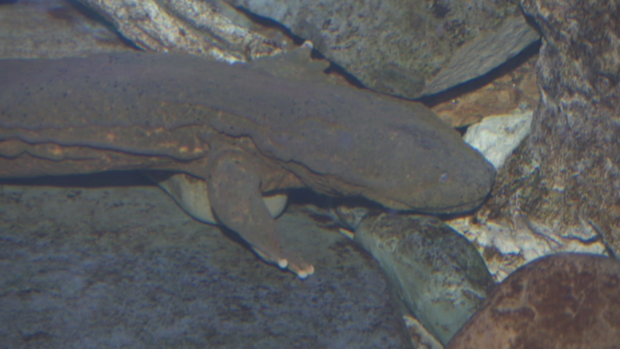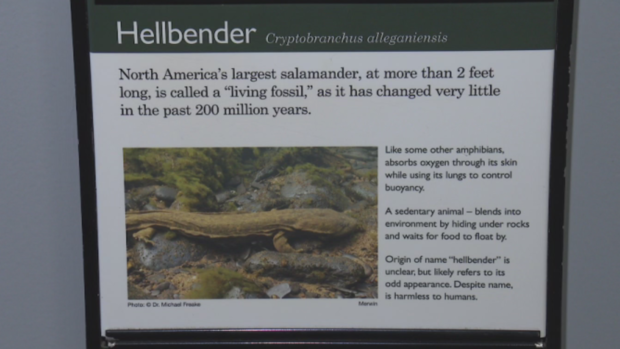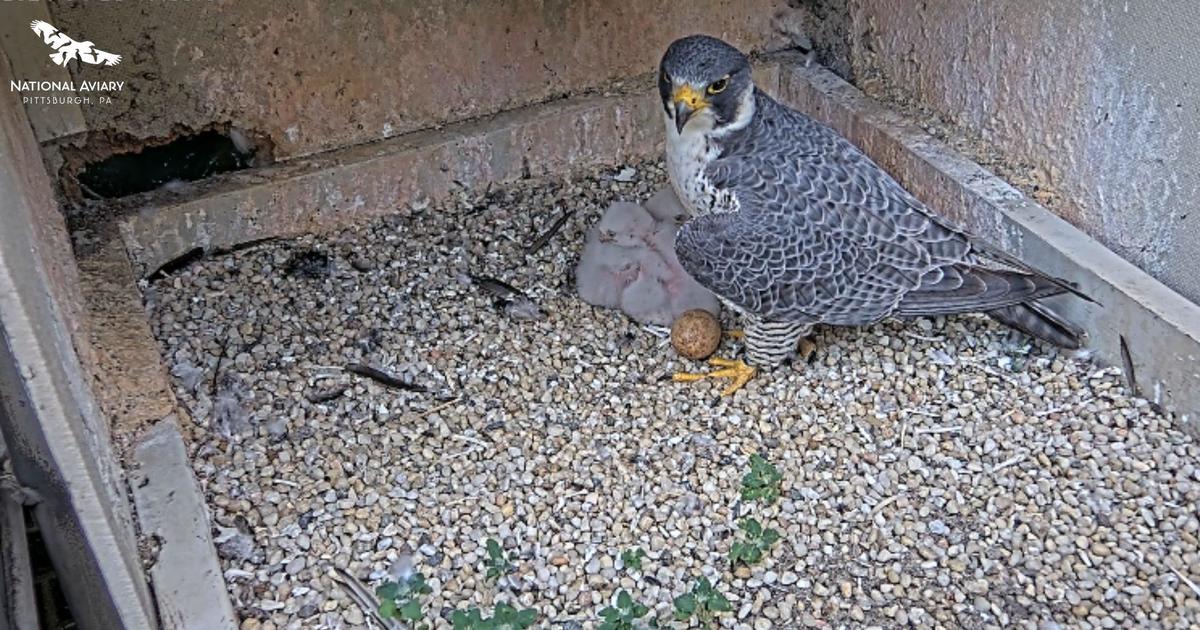Eastern hellbender's absence from Pennsylvania's waterways is warning sign of bigger problems
PITTSBURGH (KDKA) -- To look at the wide, flat, slimy face of a hellbender with its beady eyes and goofy grin, you might not think it's sending us a message.
However, the hellbender's absence from a river or a stream in Pennsylvania is a warning sign that things are not right.
"Some people think they're not the most attractive little guys," Heather Berkey, the Volunteer Services Manager and an educator at the Pittsburgh Zoo & Aquarium.
"But how could you not fall in love with that little face?" added Pittsburgh Zoo Aquarist Shanna Gay.
Despite being the official state amphibian, hellbenders aren't exactly overflowing in Pennsylvania's waterways these days or any waterway for that matter.
"We estimate there's only about 2,000 hellbenders left in the wild," said Jeff Briggler, the Chief Herpetologist with the Missouri Department of Conservation.
The largest salamander in the Americas, at anywhere from 12 to 29 inches, the eastern hellbender should live in rivers and streams throughout Pennsylvania and Appalachia.
However, hellbenders currently face many obstacles.
If a hellbender can survive to adulthood, dodging fish, otters and other hellbenders, it then faces another set of problems caused all by one thing - people.
Among those problems: habitat destruction and degradation, pharmaceuticals, heavy metals, toxins and other pollutants dumped into the water, agricultural runoff, having fracking wastewater injected into the ground from the oil and gas industry, road or dam construction, and people stealing the animals illegally from the wild.
"Humans are the hellbender's number one predator," said Gay.
The eastern hellbender's cousin, the Ozark hellbender, went through the same thing but has been rescued from the brink, thanks to more than a decade of conservation work.
"We knew this animal was probably going extinct, and we had maybe a 10- to 12-year window to try to reverse that," said Briggler.
He and other scientists with Missouri's Conservation Department built a captive breeding program, collecting Ozark hellbender eggs in the wild to hatch and grow in the safety of the Saint Louis Zoo.
"That resulted in a lot of little, baby hellbenders to release in the future," Briggler said. "And a couple of years ago, we reached our 10,000th hellbender released into the wild."
But that hasn't solved everything. There's still one more increasing risk to hellbenders.
"We had a 500 to 750 year flood event, and it devastated the habitat. We lost over half of our population of hellbenders," said Briggler.
Climate change means massive floods that were supposed to happen once a century or even once a millennia are becoming more common.
"So if we're going to be having 100 or 200 year floods every 20 years instead, are the hellbenders going to have time to rebound within those systems?" asked Briggler.
He says breeding hellbenders to be released back into the wild needs to be paired with active protection of their habitats. He says that includes things like planting trees along waterways to block runoff and filter out toxins from homes and industries.
"The more you can filter that, the more we can limit the damage to the systems," Briggler said.
Meanwhile, experts at the Pittsburgh Zoo say documenting hellbender sightings in western Pennsylvania's creeks and rivers isn't an arduous task. They say it's something anyone who's out fishing can do.
"The Kiskiminetas River has been known to be extremely dirty with industry runoff, and I think a year or two ago a fisherman found a hellbender. And from that, it spurred other people to look at water quality and safety measures. And that's now affecting our water. Our water's getting cleaner," said Gay.
She says just knowing a hellbender is living in any particular waterway can give conservationists an idea of how things are improving in the whole environment of that area.
Gay added, "We're doing survey work and looking for populations of hellbenders to make sure the environment as a whole stays healthy. So we're helping all the animals and plants that live in that environment."
But while the Ozark hellbender population is growing at the Saint Louis Zoo, and captive breeding is also underway at other zoos, including the Columbus Zoo and Aquarium in Ohio and the Good Zoo at Oglebay in Wheeling, West Virginia, the Pittsburgh Zoo's one and only hellbender is still swimming solo.
- More Earth Day content on KDKA.com.
"Captive breeding of hellbenders is still kind of new and the kinks are still being worked out, so the Pittsburgh Zoo does not have plans at this time to start a captive breeding program. But, hopefully, we will someday," said Gay.
So at this rate, it'll take years of work for Pennsylvania's hellbenders to start to recover like their Ozark relatives. But at least now, there's hope.
Briggler said, "We owe it to each one of these animals to give them a voice."
If you see a hellbender in the wild, you can document it with Penn State Outreach through this link.
KDKA Investigative Producer Tory Wegerski and Special Projects Manager Corey Martin contributed to this story.






